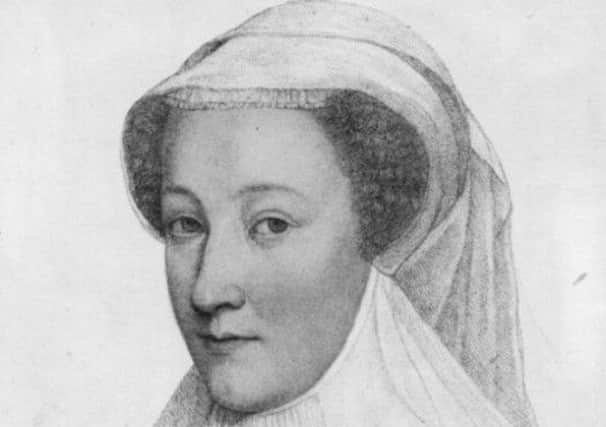Mary, Queen of Scots death warrant to go on show


The execution warrant signed by Elizabeth I brought to an end the almost two decades of what was effectively house arrest for Mary and brought about her beheading at Fotheringhaye Castle, 70 miles north of London, on 8 February, 1587.
The document, though written in the most courtly language, makes Elizabeth’s wishes crystal clear. It instructs her commissioners to “...repaire to our Castle of Fotheringhaye where the said Queene of Scottes is in custodie of our right trustie servant and Counsellor Sir Amyas Poulet Knight, and then taking her into your charge to cause by your commandment execution to be done upon her person”.
Advertisement
Hide AdIt will now form the centrepiece of an exhibition dedicated to Mary, which opens next month at the National Museum of Scotland in Edinburgh. It will feature documents and treasures loaned from collections around the world. The bible she carried at the execution and the famous memorial portraits of her will also be on show.
The original execution warrant disappeared in the recriminations which followed Mary’s death, but the surviving copy, made for court records was delivered by Robert Beale, principal clerk to the Privy Council to Henry Grey, 6th Earl of Kent, one of the two commissioners tasked with organising the execution.
It disappeared into private collections and it was not until 2007 that it re-entered the public domain. Such was its importance, a temporary export ban was put on its sale abroad to wealthy collectors by the then culture secretary Margaret Hodge so that a financial rescue bid could be put in place.
It was purchased by the Lambeth Palace Library, one of Britain’s oldest libraries, for £72,485.50, with the help of the Friends of the National Libraries, the Museums, Libraries and Archives Council/Victoria and Albert Museum Purchase Grant Fund and the National Heritage Memorial Fund.
The warrant was then reunited with an accompanying letter to the earl from the Privy Council, which has long been part of the Lambeth Library’s collection.
David Forsyth, senior curator of Scottish history, said the fact that the warrant had survived showed how important it was.
Advertisement
Hide AdHe added: “It’s couched in the courtly language of the time. It sets who’s going to be there and what’s going to happen, but it is a machination of the cogs of government that happens to have a very violent result. It talks about the danger to authors’ lives, Elizabeth’s life, it talks about the true religion of Christ, so it shows very clearly what was at the heart of this act: the fear that Mary is the focus of a Catholic conspiracy.”
Forsyth said he did not believe that Elizabeth’s life was in danger, but in 1586 paranoia was rife, and the queen’s agents were intent on getting rid of Mary. But even when presented with the death warrant, Elizabeth resisted signing it, aware of the magnitude of such an action.
Advertisement
Hide AdForsyth said: “Some people believe that she signed it by mistake as she had so much paperwork to do, but I don’t buy that. It shows that even up to the end, even though Mary was a thorn in her side, Elizabeth prevaricated over it. And even then she refused to seal the document. She tore it up at a later date, which just reflected the controversy that surrounds the warrant.”
Prior to her death, Mary had been kept a virtual prisoner by Elizabeth for 19 years. During this time she had proclaimed her right to the English throne, and was backed by the Pope in 1570. Believing Mary to be a threat to Elizabeth’s government, the queen began to build a case against her.
In 1586, a plot was uncovered by a man called Anthony Babington to kill Elizabeth, rescue Mary and place her on the throne. Letters between the latter and Babington, in which she agreed with what he was doing, sealed her fate.
Forsyth said the exhibition would focus on Mary’s whole life and her achievements: “We wanted to look at her in a wider European context,” he said. “This is a woman who as a very young girl is taken off to the French court, one of the most sophisticated courts in Europe. She is somebody who knows she’s going to rule from a very young age, whereas with Elizabeth there’s some dubiety about her being illegitimate. Mary was the daughter of an anointed king of Scots, she becomes an anointed queen of Scots at nine months old.
“We want to get over the sense that she was a monarch who governed properly. She was a woman in a man’s world, a very determined, spirited woman who negotiated a very difficult, complex situation.”
The exhibition runs from 28 June to 17 November.